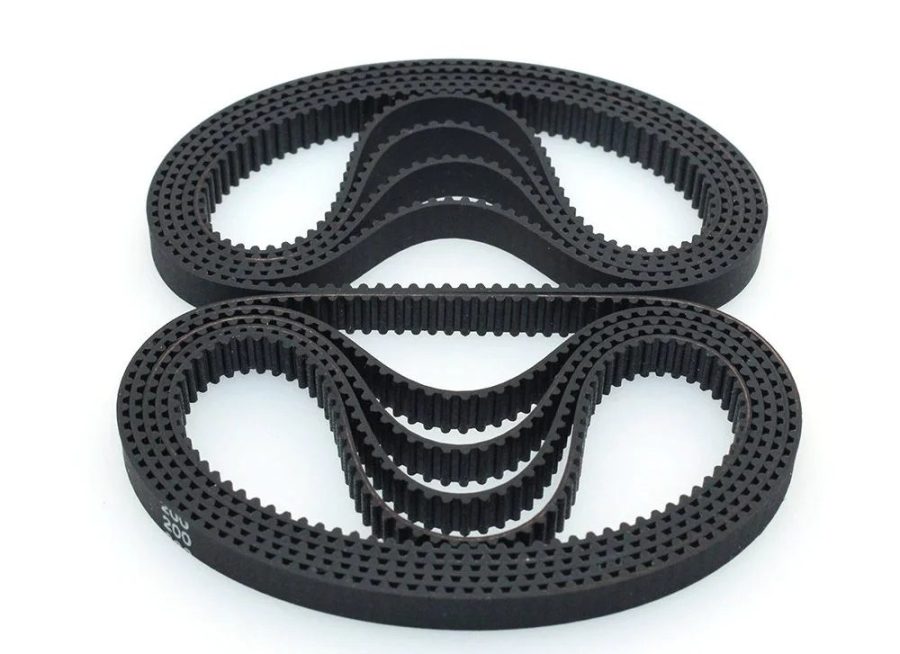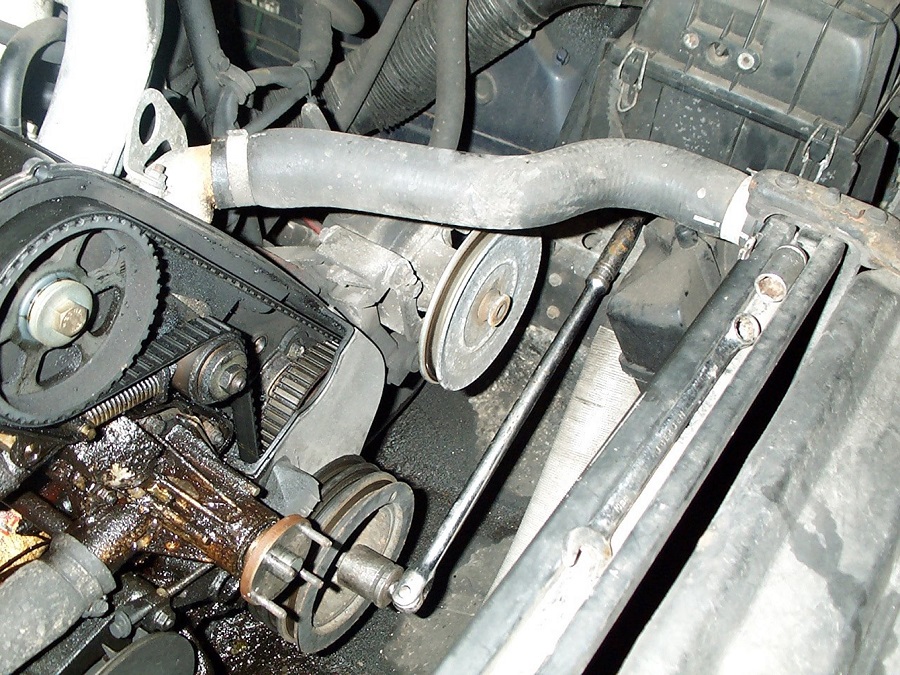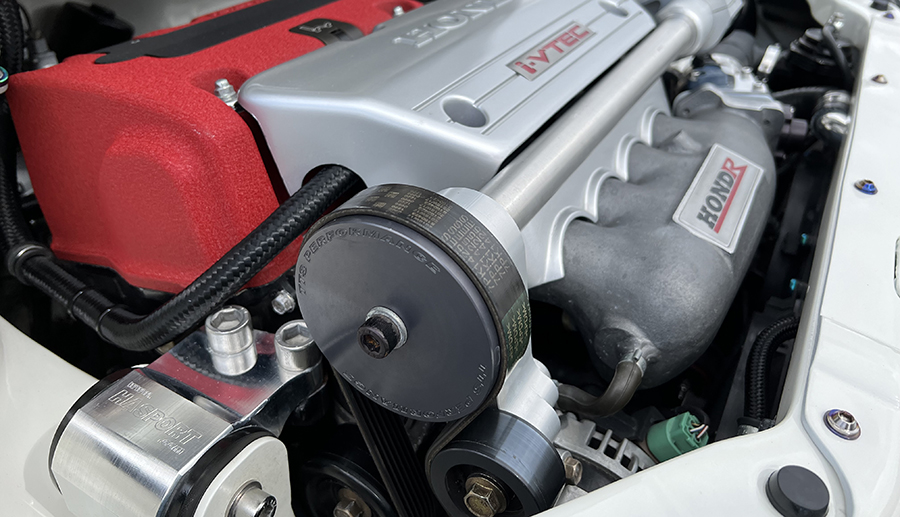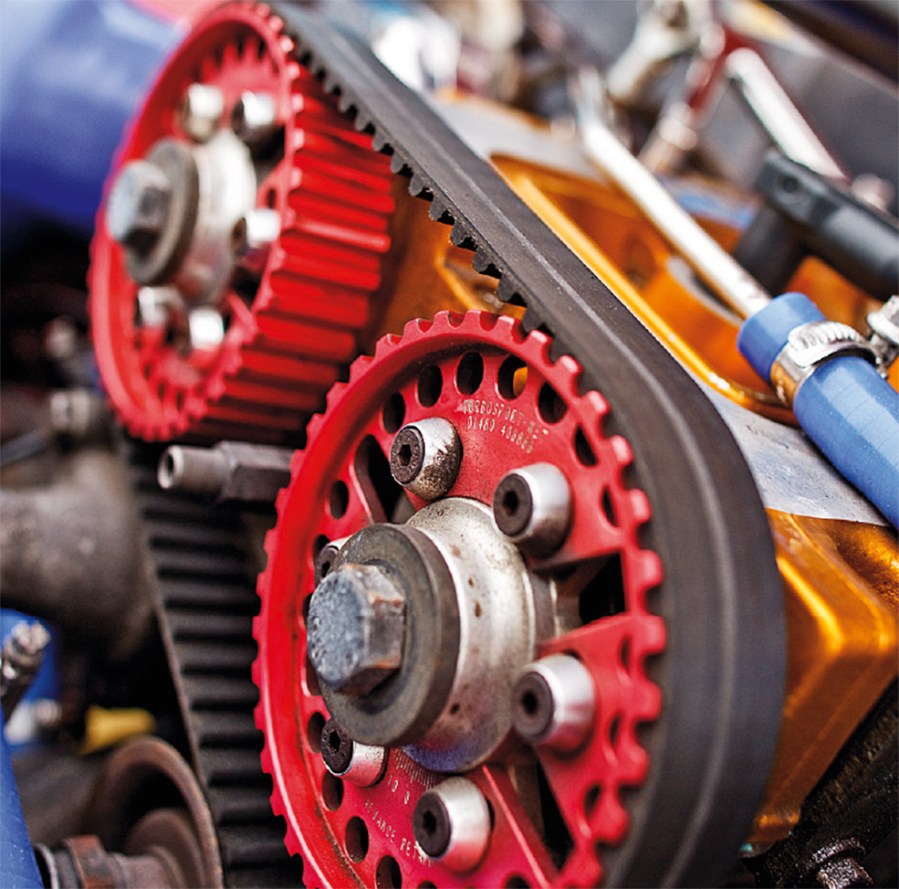Don’t wait for a breakdown! Learn all about timing belt replacements and when to schedule them for your car. Our ultimate timing belt guide has you covered.
As car enthusiasts, we know that proper maintenance is key to keeping our beloved rides running smoothly. One critical component that deserves our attention is the timing belt – also often referred to as the cam belt. In this guide, we’ll dive into the world of timing belts, exploring what they are, their importance, and why staying on top of maintenance is crucial for optimal performance.

A timing chain is a more durable alternative to a timing belt.
What is a car timing belt?
The timing belt is one of the essential components of a vehicle’s engine, and it plays a critical role in keeping everything running smoothly. However, it is often overlooked until it fails, which can cause significant damage to the engine and lead to costly repairs. A timing belt is a vital engine part that coordinates the rotation of the crankshaft and camshaft. That means the piston is in the correct position when the spark plug fires, and that the inlet and exhaust valves open and close at precisely the right time in the engine cycle.
What’s the difference between a timing belt and a timing chain?
A timing belt is usually made of reinforced rubber to tolerate the stress of engine usage and must be changed at recommended intervals to prevent severe engine damage due to a worn or broken timing belt. In contrast, a timing chain is a metal chain, similar to a bicycle chain, that connects the crankshaft and camshaft. Made of durable metal alloys, timing chains tend to have a longer lifespan compared to timing belts but a generally noisier and less efficient than rubber belts. Timing chains are therefore most commonly found in older vehicles and in engines designed for heavy-duty or commercial performance.
What is an interference engine?
Most modern cars have what are known as interference engines, which have a high compression ratio and larger valves that open further into the combustion chamber. This allows the engine to produce more power and efficiency but means the piston can occupy the same space as an open valve. Therefore, the timing between the valve opening and the piston reaching the top of the cylinder must be precisely in sync to avoid contact that could lead to catastrophic damage and costly repairs. By contrast, in a non-interference engine, there is a gap between the piston and the valve, so they do not interfere even if the timing belt or chain fails.

How often should you replace your car’s timing belt and why?
Timing belts aren’t immortal, and their lifespan varies depending on the make and model of your vehicle. Generally, it’s recommended to replace your timing belt every 60,000 to 100,000 miles or as specified by the manufacturer. Neglecting this vital maintenance item can lead to serious engine failure, resulting in costly repairs.
Timing belt breaks often happen without warning, making regular inspections and replacements essential to avoid expensive engine damage. Don’t wait for signs of wear and tear to appear before taking action, instead follow the manufacturer’s recommended replacement intervals.
How much does it cost to replace a car timing belt?
When it comes to replacing a timing belt, costs can vary based on factors such as your location, the make and model of your vehicle, and the labor rates of mechanics. On average, you can expect to pay between $500 to $1,000 for parts and labor. To ensure a reliable replacement, you’ll need to find a good mechanic with experience in timing belt replacements. Seek recommendations from fellow enthusiasts or check popular online forums or social media groups for recommendations and you’ll find a mechanic you can trust.
Signs that your timing belt needs replacing may include visible wear, engine noise or reduced performance and erratic idling. But often there are no signs of the impending doom until it’s too late. The main factor when it comes to timing belt replacements is simply age and mileage – so, to put it bluntly, get your timing belt replaced religiously at the recommended intervals!

Common Issues with Car Timing Belts
Common issues with car timing belts include deterioration due to age, misalignment during installation, and tensioner or water pump failure. Exposure to fluids such as fuel, oil, or coolant can also cause damage to the timing belt and significantly reduce its lifespan. It is important to follow the maintenance schedule suggested in the owner’s manual, including regular inspections and timely replacement intervals based on mileage or age. By doing so, you can avoid costly repairs and ensure the longevity of your vehicle’s timing belt.

Car Timing Belt Replacement Costs and Tips
Timing belt replacement costs for a car vary with its make and model. Following the manufacturer’s recommendations, ideally, replace it every 60,000-100,000 miles. You should replace it before it breaks and damages your engine. Replacing related parts during this process such as the water pump and any tensioners can save on labor costs too. Likewise, if you’re working on your engine and need to remove the old belt as part of the process, you should always take the opportunity to replace it with a new timing belt – it’s just not worth the risk of re-installing an old rubber timing belt.
Can you replace a car timing belt yourself?
Although it is possible to replace a car’s timing belt, it can be a difficult, labor-intensive process requiring specialized tools and knowledge. We’d recommend having a professional mechanic perform the task, as costs can vary depending on the car’s make and model. We’d suggest leaving this one to the pros unless you are extremely confident.

The Ins and Outs of Car Timing Belts
As car enthusiasts, we understand the importance of paying attention to every detail of our rides. The timing belt plays a vital role in the engine’s performance and longevity. By understanding its function, adhering to recommended replacement intervals, staying alert for warning signs, and finding a reliable mechanic, we can ensure our timing belts are in optimal condition. Doing so will help to keep our cars’ engines purring like a true performance machine. Remember, proper maintenance is the key to unlocking the full potential of your car and enjoying the open road to the fullest.




